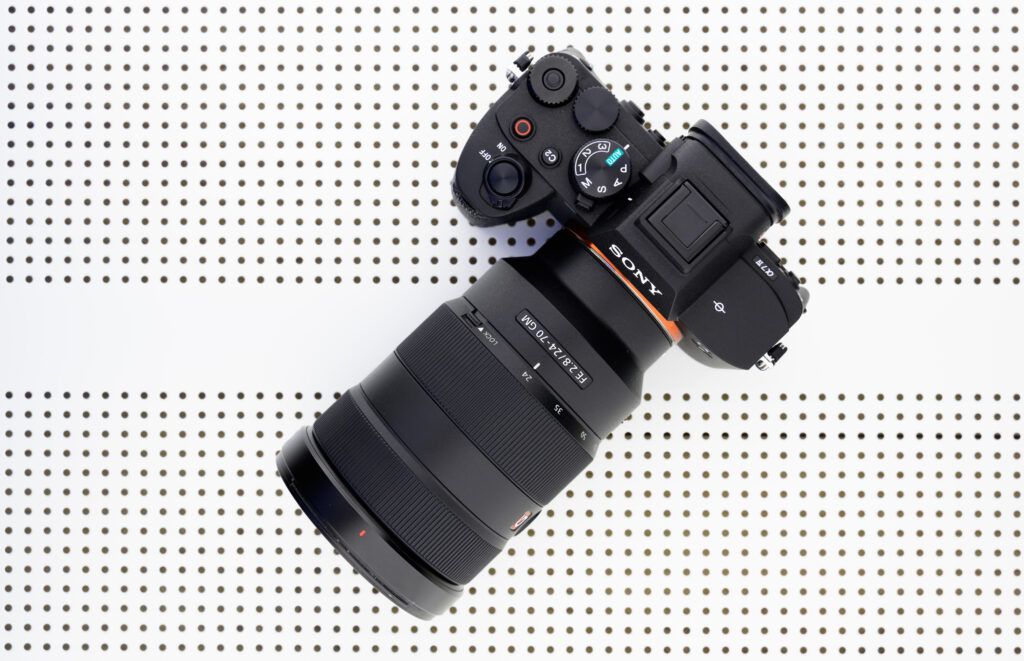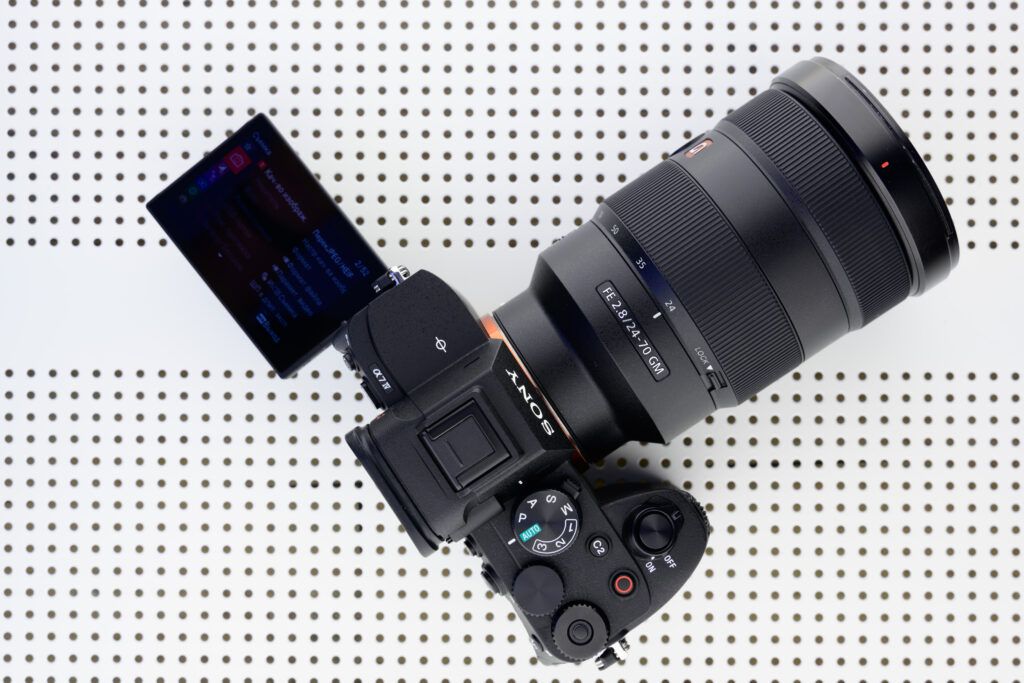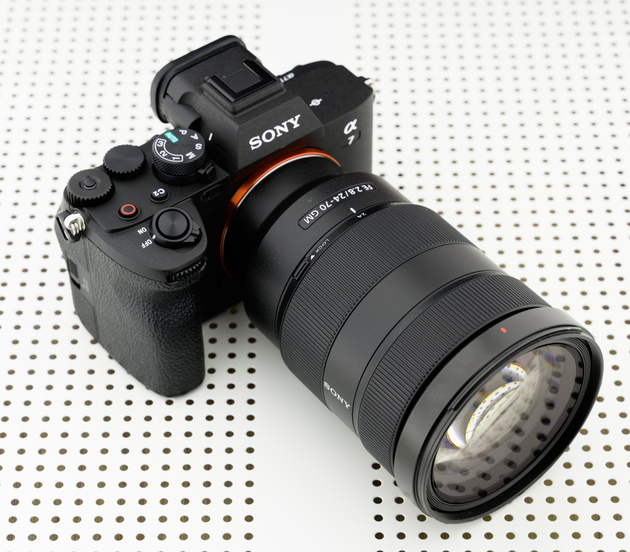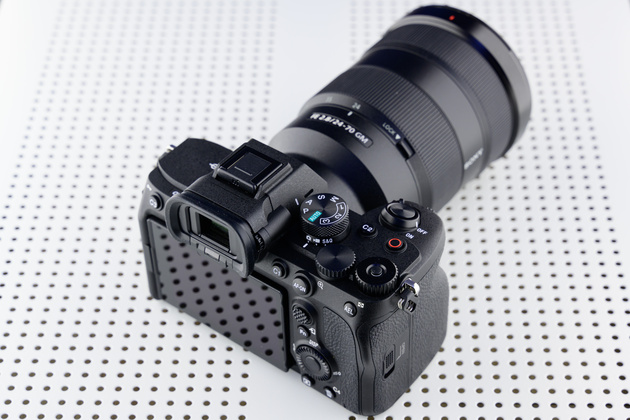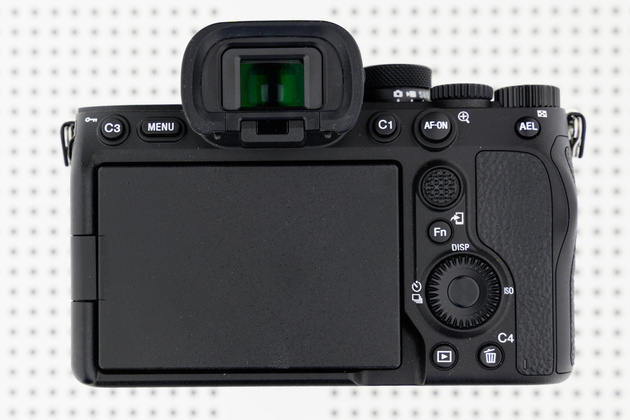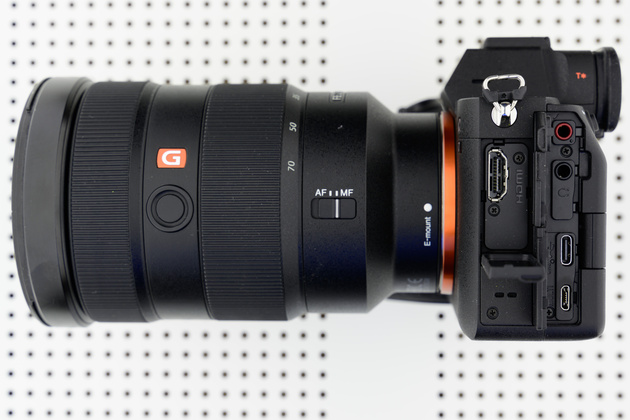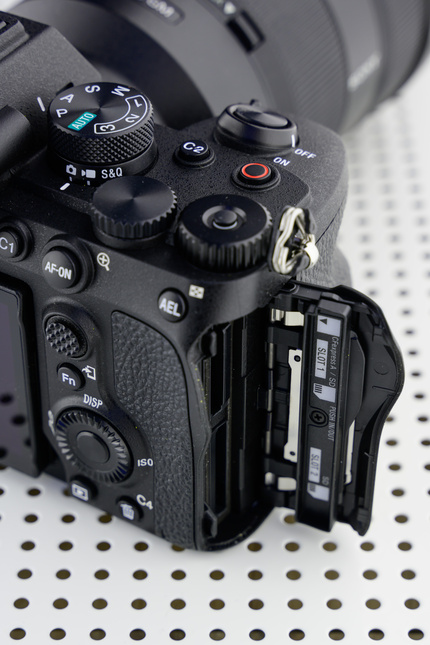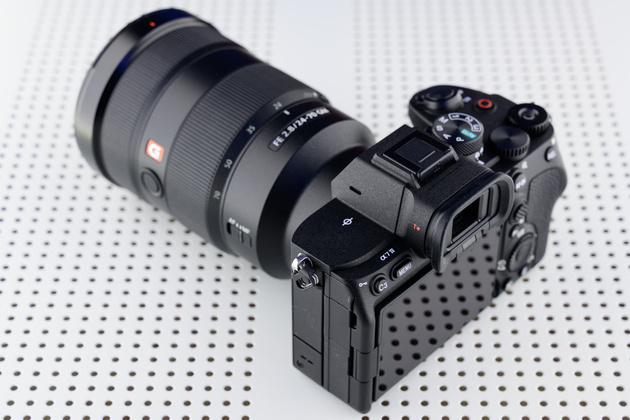Key features of the camera
In Sony’s lineup of full-frame mirrorless cameras, the usual “seven” is given an important place: from the very beginning it was the basic model with the most balanced characteristics, addressed to the widest possible range of buyers.
This very same model has traditionally been the most affordable. In 2021, the company has released the fourth generation of such cameras.
Sony A7 IV became more expensive than the previous model at the start of sales, however, its characteristics were noticeably improved.
For example, now it is very difficult to draw a line where it is stronger – in photo or in video department. Universality has not only been preserved, but also expanded. (Albeit, at the expense of accessibility.)
We will tell you about all the intricacies of working with the Sony A7 IV in our longread in the “Week with an Expert” format! We’ll be honest, the camera stayed in the editorial office for much longer – you just can’t figure it out in a week.
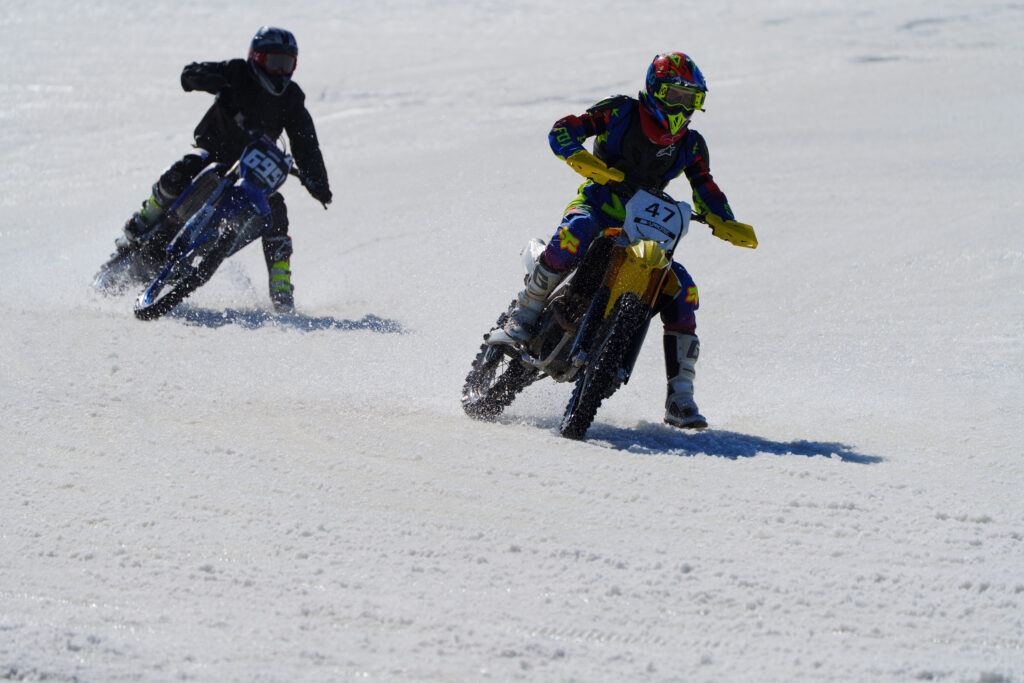
Sony A7 III vs A7 IV Comparison Table
We have summarized the main features of the Sony A7 III and Sony A7 IV in this comparison table that clearly demonstrates the improvements. And below we will go into more detail about the main points.
| Specs | Sony A7 III | Sony A7 IV |
|---|---|---|
| Sensor | BSI CMOS 35.6×23.8mm | BSI CMOS 35.9×23.9mm |
| Max Resolution | 24 MP, 6000×4000 | 33 MP, 7008×4672 |
| Processor | BIONZ X | BIONZ XR |
| Continuous Shooting | Up to 10 fps | Up to 10 fps |
| Buffer Size | 89 RAW, 163 JPEG | More than 1000 RAW, More than 1000 JPEG |
| ISO Range | ISO 100–51200 (expandable to ISO 50-204800) | ISO 100–51200 (expandable to ISO 50-204800) |
| Image Stabilization | 5-axis in-body image stabilization | 5-axis in-body image stabilization |
| Stops of Stabilization | Up to 5 stops | Up to 5.5 stops |
| Autofocus | Hybrid (phase-detection/contrast-detection) | Hybrid (phase-detection/contrast-detection) |
| Autofocus Points | 693 phase-detection and 425 contrast-detection points covering 93% of the frame | 759 phase-detection and 425 contrast-detection points covering 94% of the frame |
| Autofocus Sensitivity | -3EV to -20EV | -4EV to -20EV |
| Eye Autofocus | Humans and animals | Humans, animals, birds |
| Minimum Shutter Speed | 1/8000 s | 1/8000 s |
| Sync Speed | 1/250 s | 1/250 s, 1/320 s for APS-C |
| Silent Shooting | Yes | Yes |
| Max Video Resolution | 3840×2160 up to 30p | 3840×2160 up to 60p |
| Max Bitrate | 100 Mbps | 600 Mbps |
| 10-bit 4:2:2 Recording | No | Yes |
| Gamma Curve Support | S-Log2, S-Log3, HLG, HLG1-3 | S-Log2, S-Log3, HLG, HLG1-3 |
| Wireless Interfaces | Wi-Fi IEEE 802.11b/g/n, Bluetooth 4.1 | Wi-Fi IEEE 802.11 a/b/g/n/ac, Bluetooth 4.1 |
| Memory Card Slots | SD UHS-I/MemoryStick DUO, SD UHS-II | SD UHS-II/CFexpress Type A, SD UHS-II |
| Display | Tilting 3″ touchscreen, 921,600 dots | Vari-angle 3″ touchscreen, 1,036 million dots |
| Viewfinder | OLED, 2.4 million dots | OLED, 3.69 million dots |
| Dimensions | 126.9×95.6×73.7 mm | 131.3×96.4×79.8 mm |
| Weight (with battery and memory card) | 650 g | 658 g |
| Dust and Moisture Protection | Yes | Yes |
| Menu | Old structure | New structure |
Even with a glance at the table in which we highlighted the advantages of the new camera it’s enough to understand: in the Sony A7 IV, it wasn’t just the individual elements and characteristics were improved, but absolutely everything.
This is a fundamentally new camera on a new sensor and a top-end processor from Sony A1. The performance of the BIONZ XR has been reportedly improved by 8 times compared to the BIONZ X.

A simple example:
The A7 IV camera is capable of up to 120 autofocus and exposure calculations per second; improved the angles from which eyes will be detected during autofocus. The almost infinite buffer is also a merit of the new processor. And of course, new video features.
We will talk about them in more detail later, but the main thing is 4K video with a frequency of up to 50/60 fps, support for 10-bit color and 4:2:2 subsampling in all modes, the ability to shoot in 4K with intraframe compression and a bit rate of up to 500 /600 Mbps.
It also claims that there is no limit on the recording time, and we will check this in our test below. Of the interesting features, we note the electronic compensation of the breathing effect and improved digital stabilization.
4K at 50/60fps can only be shot from the Super 35 (APS-C) area. With a lower frequency – from the entire width of the full-frame sensor. The camera can stream via USB in Full HD resolution at up to 60 fps.
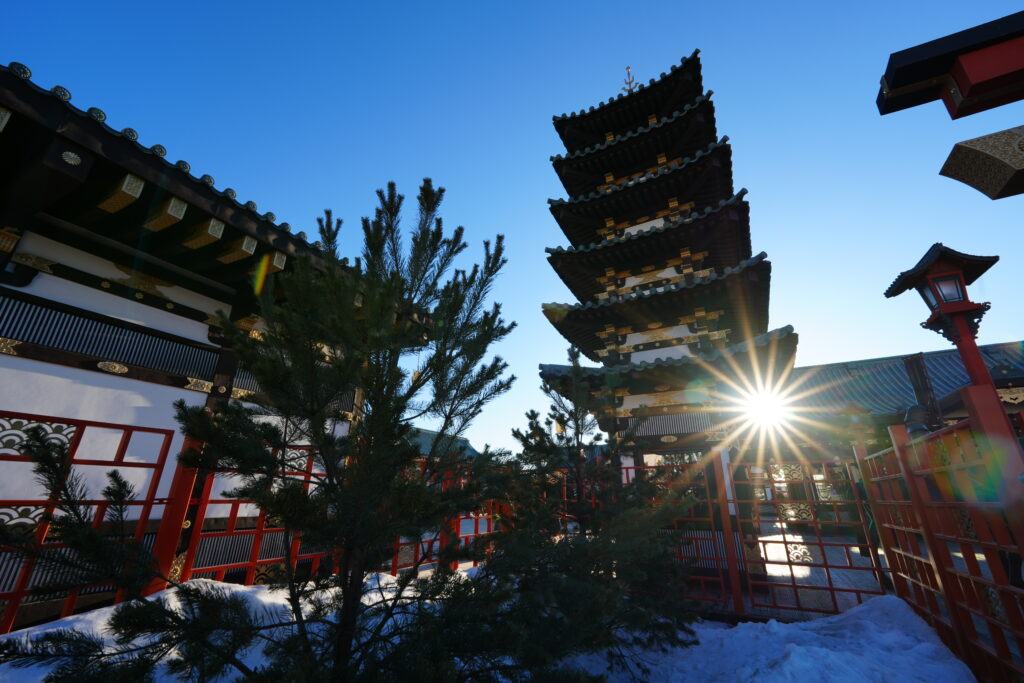
Like the top Sony A1, the new “seven” has acquired support for the new HEIF format with 10-bit color, and the CFexpress Type A format has appeared in the set of supported memory cards. However, the camera works fine with the good old SD UHS-II without significant limitations.
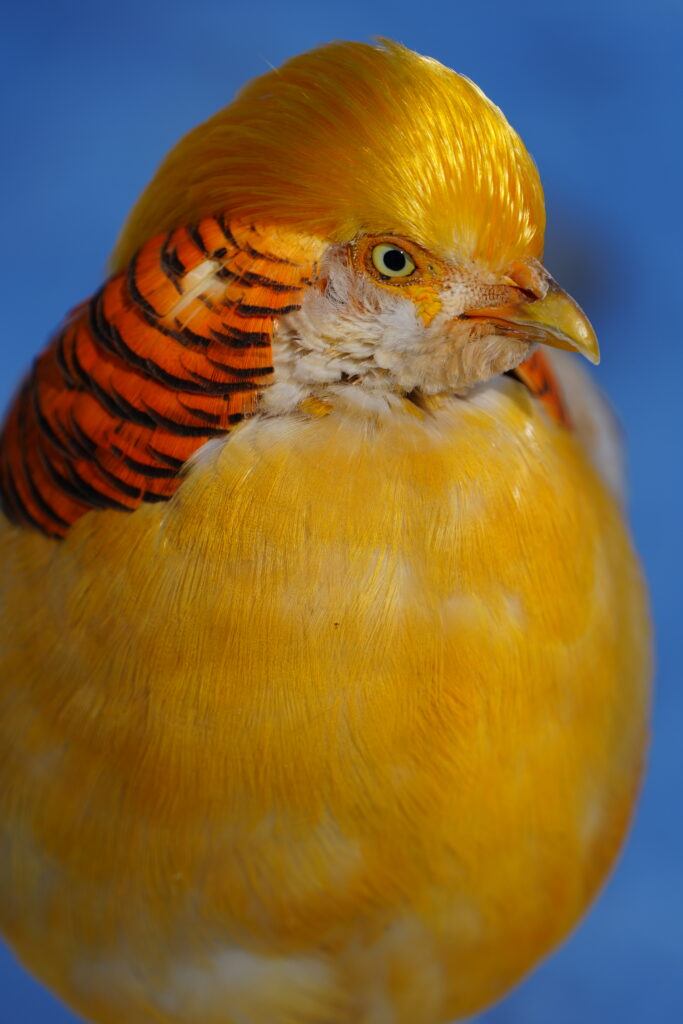
From ergonomic and interface improvements, a clear step forward is the fully articulated display and the updated menu structure, as in the Sony A1.
In general, the Sony A7 IV has a lot of improvements and features that are not obvious at first glance. So let’s finally move on to a detailed test!
Design and interface
Buttons and switches
In terms of design and interface, the Sony A7 IV is the successor to the more professional Sony A1 and Sony A7S III. The camera body has become a little more massive, the handle is more grippy.
The location of the controls has not changed much, but there was one conceptual change: a dedicated photo / video / S&Q mode switch.
This approach allows you to optimize the set of settings for each of the modes, as well as make the display of information on the display more convenient (for example, indicate the remaining space on memory cards in frames or minutes of video).
You can still start recording while in photo mode, as well as select basic recording options.
Basic settings are also common to all shooting modes. That is, the separation of the photo and video modes is not made “hard”, but rather optional – to optimize the interface.
Recall that traditionally in Sony cameras there is the possibility of separate programming of buttons for photo, video and view mode.
Almost all controls can be reprogrammed, including buttons on the lens. And the set of alternative functions is traditionally wide and sometimes even seems redundant.
The exposure compensation wheel has lost its graduation, which somewhat complicates the work at first. Its function can now be changed, for example, to set the color temperature. Thus, the camera has a fourth control wheel.
Menu
Here, an updated structure is applied, as in the Sony A1 and Sony A7S III.
The grouping of functions and settings in the menu looks more logical, although it takes some getting used to. The new menu fully supports the touch interface, which significantly speeds up the work.
The response of the menu has become much faster, lags are not felt. And the only complaint here may be a not always clear translation with an abundance of abbreviations.
In general, it is worth laying a few days to set up the camera. There are really a lot of subtle settings that need to be studied, understood, tried and applied correctly.
Design, dust and moisture protection
The dust and moisture protection of the Sony A7 IV has been upgraded.
Compared to the A7 III, the seam sealing of the body and battery cover has been strengthened, the lens lock button has been redesigned, and additional cushioning has been implemented around the lens mount.
The body is still made of metal.
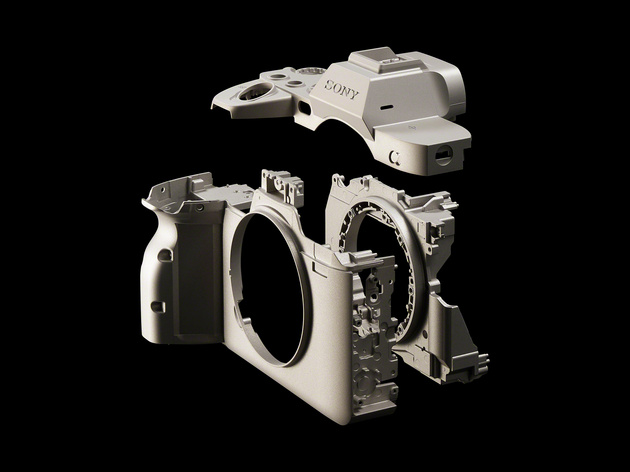
Now it is possible to close the mechanical shutter when the camera is turned off, so that dust does not get on the sensor. The function works even when shooting with the electronic shutter.
Connectors
The set of interfaces also received an update. The camera now uses full-size HDMI. Like the previous model, 3.5 mm audio jacks, a Micro USB multi-interface connector, and high-speed Type-C have been preserved. The latter supports PowerDelivery for fast charging or powering the camera while in use.
There are two slots for memory cards.
Both support SD UHS-II, the top one also supports the proprietary CFexpress Type A fast format. The use of such specific cards is advisable for continuous shooting.
Video recording at maximum quality settings is also available when working with SD UHS-II V90.
The shoe has been redesigned to support digital microphones, as in four of Sony’s latest cameras: the A7R IV, A7S III, A1 and A7C. Both a digital signal and power are transmitted through the shoe contacts, which makes it as easy as possible to work. The XLR-K3M can record four-channel audio.
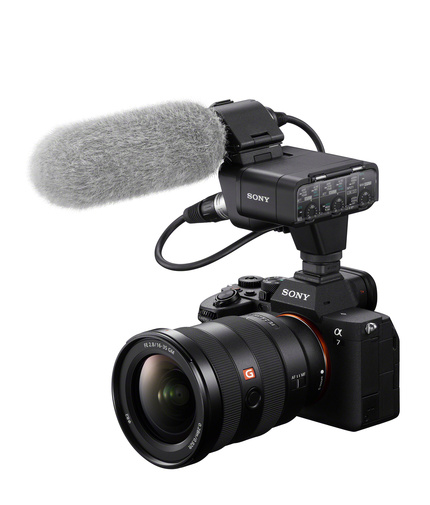
Viewfinder
The screen and viewfinder of the Sony A7 IV are new.
The screen became rotary and received a 3-inch sensor with a resolution of 1,036,800 pixels. Yes, I would like to see a higher resolution of the display… But in terms of the articulated design, even the Sony A1 would get jealous. It’s really convenient!

The viewfinder provides Quad-VGA resolution (3.69 million dots) and a refresh rate of up to 120 fps! If you want to give priority to speed or image quality – it can be selected from the menu.
The viewfinder is large, with a 1.3 cm (0.5 type) sensor and a magnification of approximately 0.78x. The eyepiece point is 23 mm from the eyepiece lens and 18.5 mm from the eyepiece frame. Working with it is comfortable and pleasant.
Image quality
The Sony A7 IV sensor is absolutely new, we have not seen it before in any camera. However, there is a possibility that we will see it in future models.
It is a full-frame back-illuminated CMOS sensor with a resolution of 33 megapixels. The increase in resolution compared to the previous generation is noticeable. What about noise and dynamic range? Let’s check!
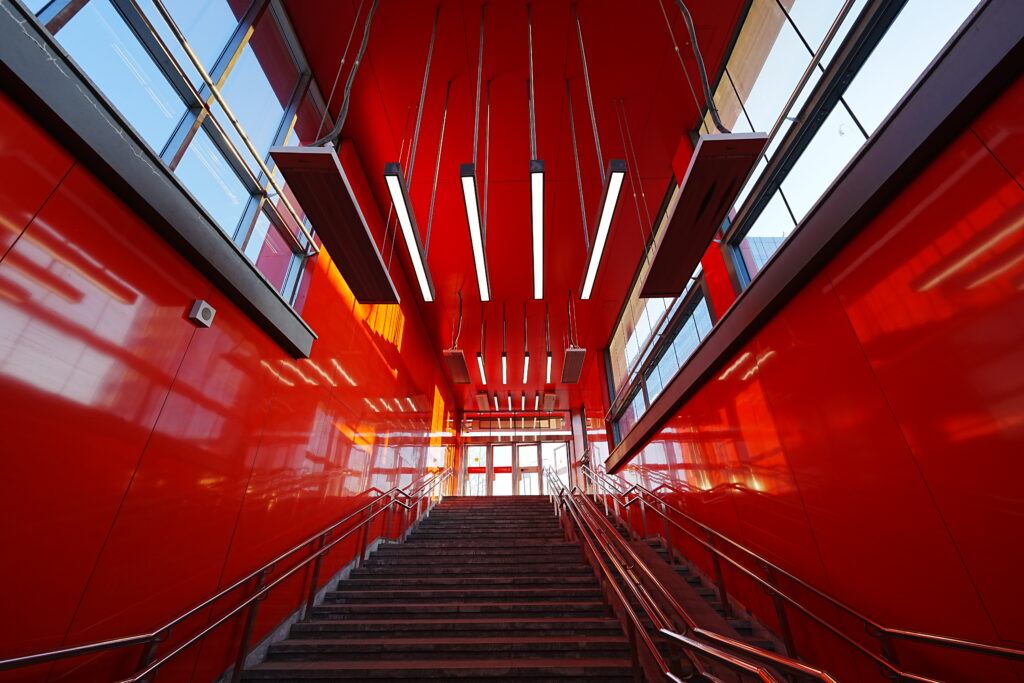
Detailing
The 33-megapixel sensor, especially paired with high-quality G Master lenses, provides very high frame detail. Images look ringingly sharp when zoomed in, not blurry.

There is a large margin for cropping.
Photos can easily withstand large format printing, A2 and more.
High ISO and Noise
The Sony A7 IV camera starts from ISO 50.
This is an expandable value, with it there may be losses in the bright areas of the frame. But the long exposures will now be available to you. There is no talk of noise at low ISOs. The image is absolutely smooth in both midtones and shadows.
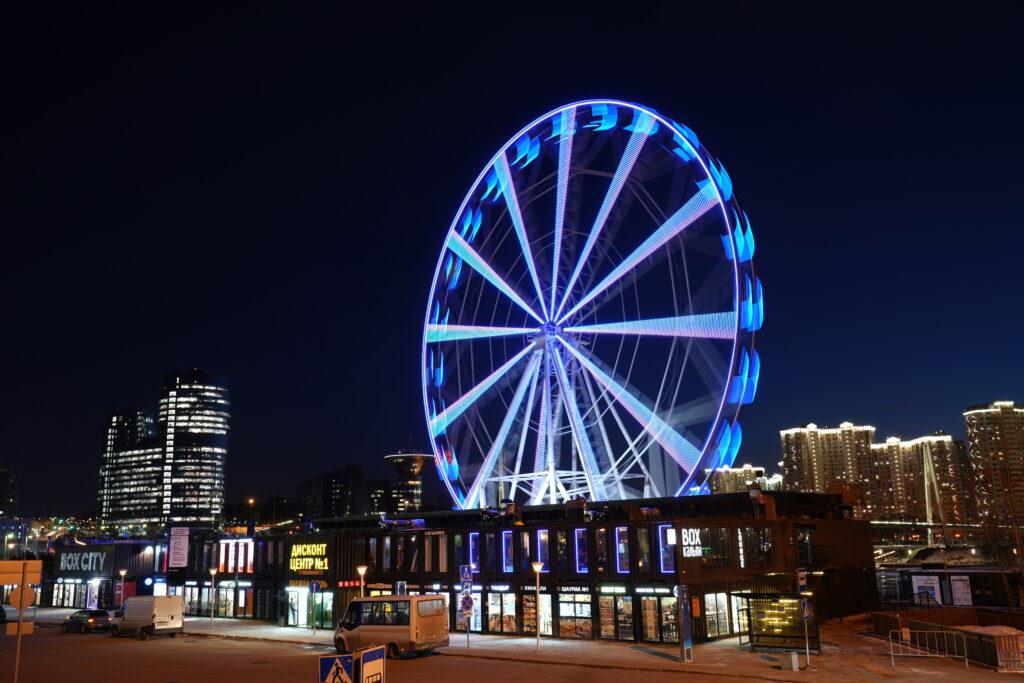
The main ISO range starts at 100 units. The picture looks perfect: no noise, very high detail and pure color. It stays that way up to ISO 400.
With ISO 800, noise gradually begins to remind of itself.
They are noticeable only when carefully studying deep shadows with a strong increase. Surprisingly, despite their formal presence, there is no noticeable quality degradation either at ISO 1600 or even at ISO 3200.

These are absolutely working values suitable for large format printing without additional processing.
ISO 6400 also looks impressive, although with an increase it is already noticeable that the sky is not so smooth, and in some places the contrast drops in the shadows.
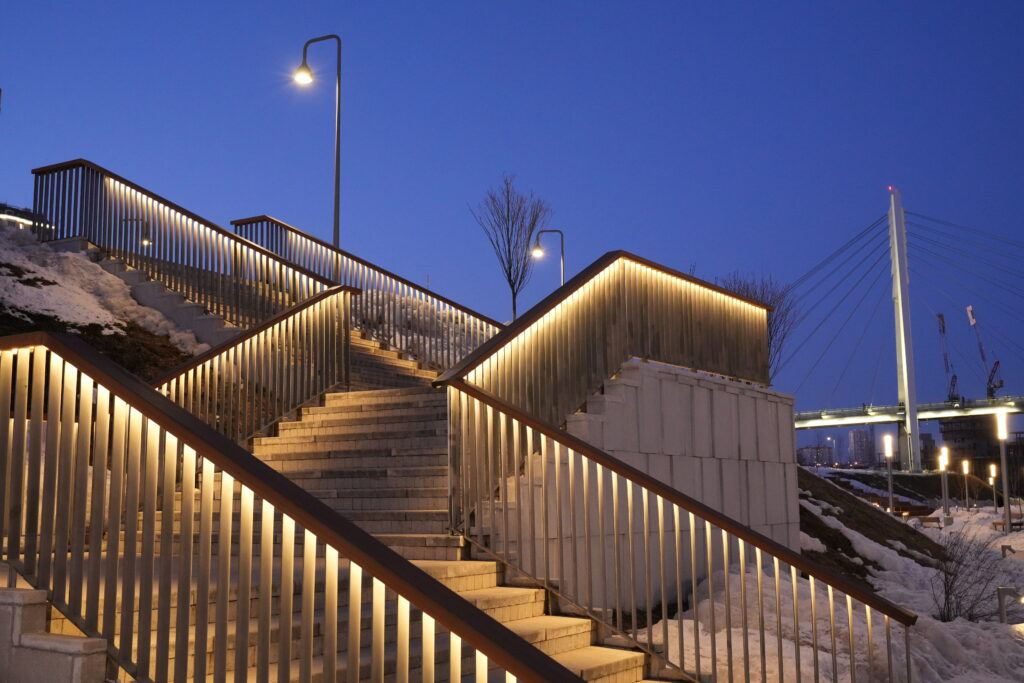
The first value to consider in practice is only ISO 12800.
On a large format print, small noise and loss in halftones in the shadows can be noticeable. In most cases, this ISO will also work.
At ISO 25600, traces of colored noise appear in the shadows, noticeable when zoomed in. However, color degradation is not critical, and detail is still high. Such images are perfect for publishing on the web or printing in not too large formats, up to A4.
Only at ISO 51200 does the camera surrender to the laws of physics.
Detail and contrast are noticeably reduced, photos do not look so impressive. For reportage shooting, ISO is still applicable, for art – rather not. And yet this is an excellent result, which was previously available only to top reportage cameras!
The next two values, ISO 102400 and ISO 204800, are extensible. They should be used only in extreme cases to capture the moment, but not for artistic photography: the degradation of color, contrast and detail is too noticeable.
Dynamic Range
Despite the high resolution, the new Sony A7 IV sensor provides not only low noise, but also a wide dynamic range.
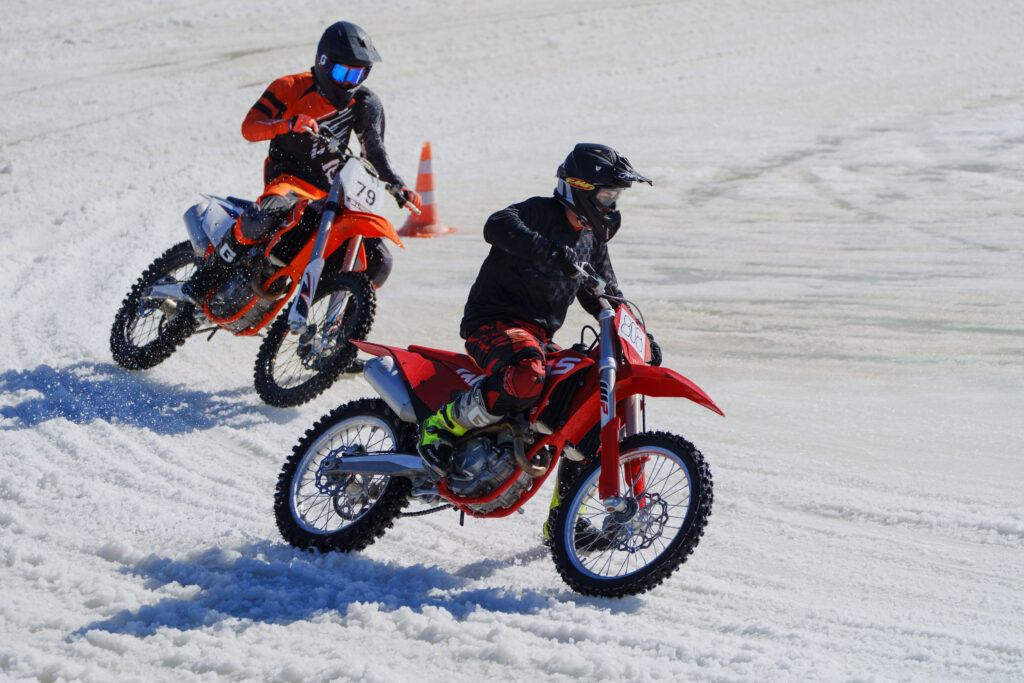
Dark shots can be safely brightened up by three steps, even the noise level is almost not increased. If you wish, you can do four, but this will not give new information.
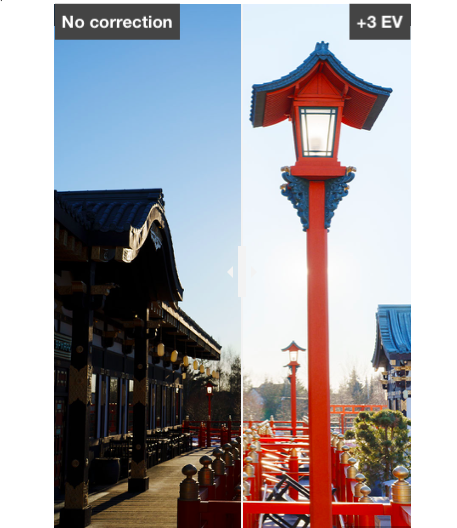
The margin in highlights is also large and allows you to comfortably pull overexposures from RAW by more than two steps. The processing potential is huge!
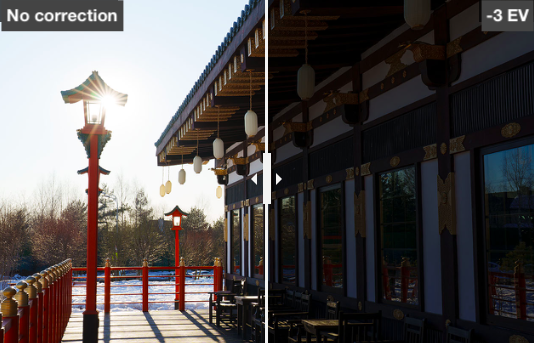
The default in-camera JPEG settings make good use of the sensor’s potential.
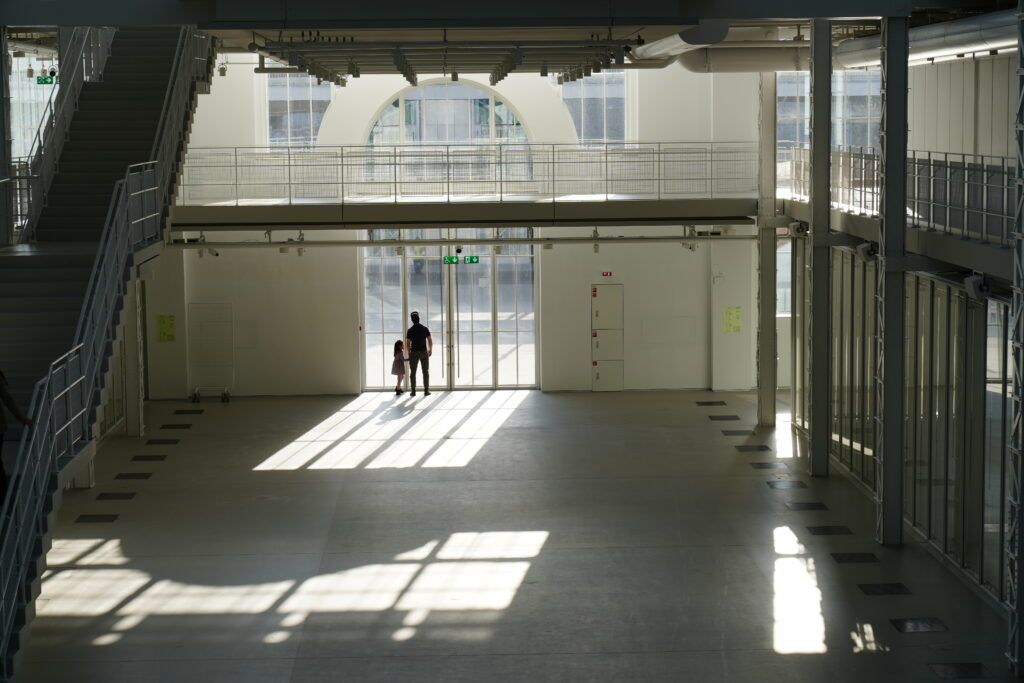
Color rendering
Color rendition issues are subjective. Sony’s camera color profiles have their fair share of admirers and critics alike.

To critics, we are ready to convey the words of the company representatives that during the development of this model, “a lot of work has been done to display the natural color and texture of the skin.”

We took several portraits in different lighting to showcase the Sony A7 IV skin tone. JPEG shot with a portrait profile and presented without processing.
File formats
Even here, the camera has acquired new features.
For example, RAW is available in three quality settings: compressed (just under 40 MB per file), lossless compressed (about 45 MB), and uncompressed 14-bit RAW with about 70 MB.
Standard JPEG is joined by the new HEIF format. Moreover, you can use both 8-bit and 12-bit versions of this format.
The gain in file size is quite noticeable: about 40% for 8-bit and about 20% for 10-bit HEIF compared to 8-bit JPEG in high quality. There’s even an HDR photo feature! You can open and edit photos in HEIF format using proprietary Sony Imaging Edge Desktop software.
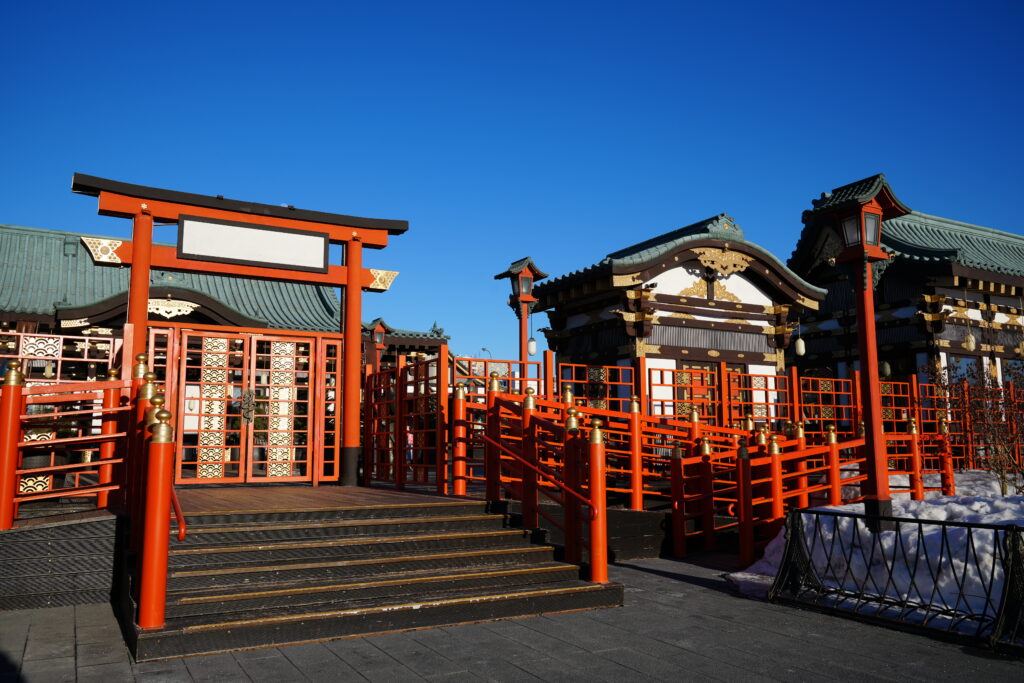
Camera in action
Work speed
Thanks to the new processor, the Sony A7 IV is faster than its predecessor.
This is noticeable literally in everything, starting from the time of turning it on. It takes less than half a second. The autofocus speed does not raise any questions, the shutter lag is not tactilely fixed.
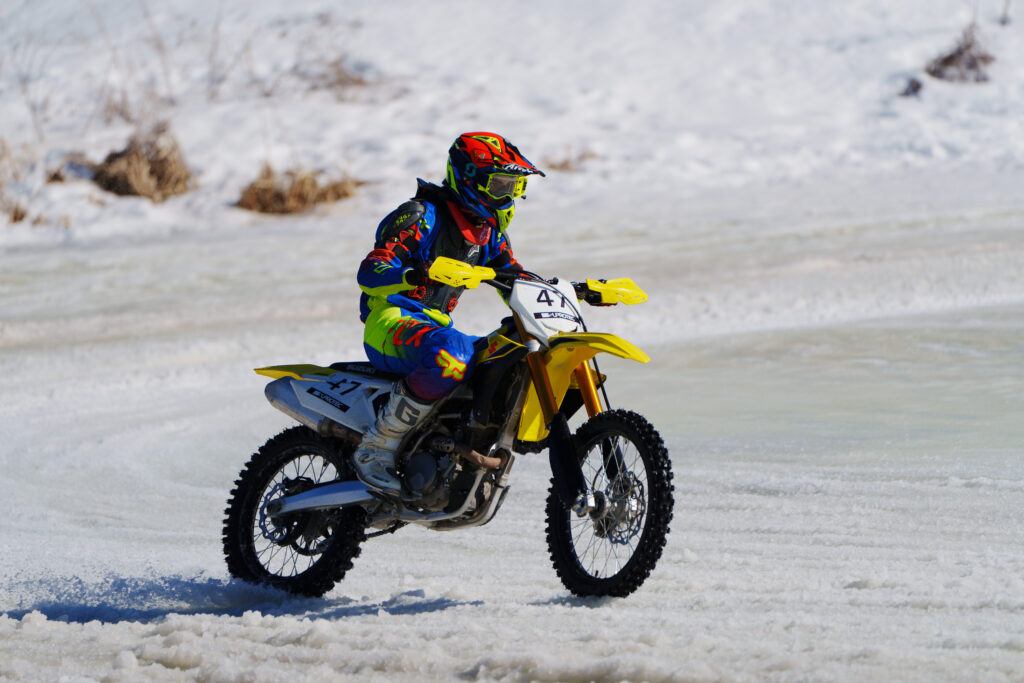
The response to button presses is instantaneous. In the past, there are lags when working with the menu. And even after shooting a long series, the camera allows you to view the pictures already recorded on the card without pauses or change any settings.
Burst shooting
The speed of continuous shooting compared to the previous model of the Sony A7 IV has not changed: all the same 10 frames/s. But the declared buffer size is now almost infinite – more than 1000 frames. However, there are some subtleties here.
The camera really accelerates to 10 fps with both electronic and mechanical shutters. Autoexposure, continuous autofocus – all this also works with continuous shooting.
But the maximum speed is achieved only for compressed RAW. Uncompressed and lossless compressed RAW reduce the practical rate of fire to around 6-7 fps. It’s probably because of their 14-bit nature.
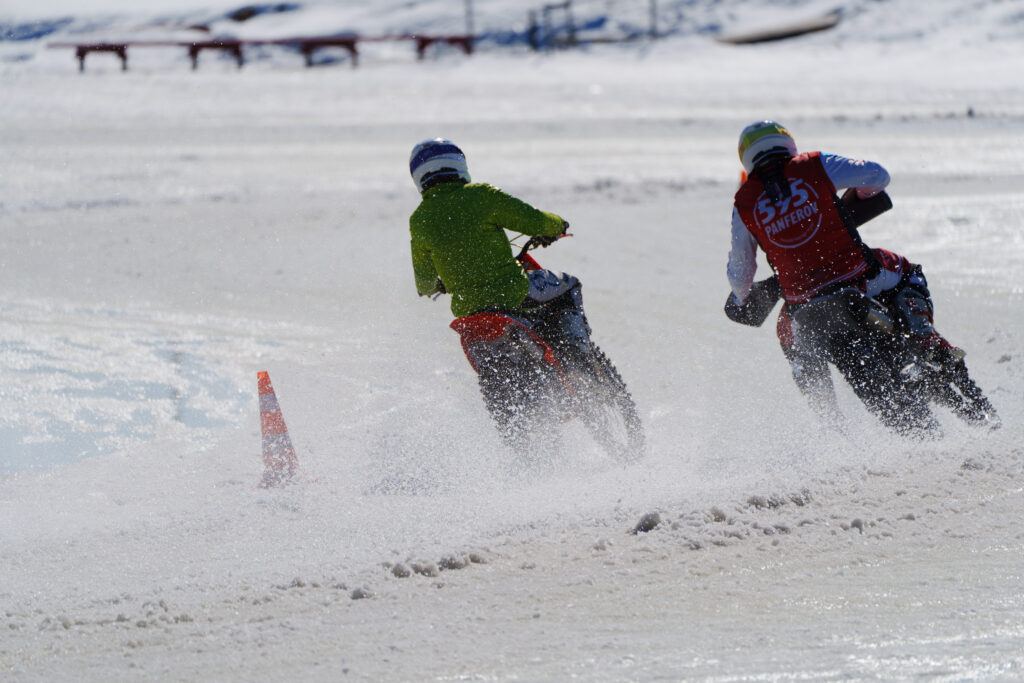
There are some burst limits if you shoot with an SD memory card. With our editorial SDXC UHS-II card (claiming to record speed of 260MB/s), the camera started to slow down after 55 frames at maximum speed.
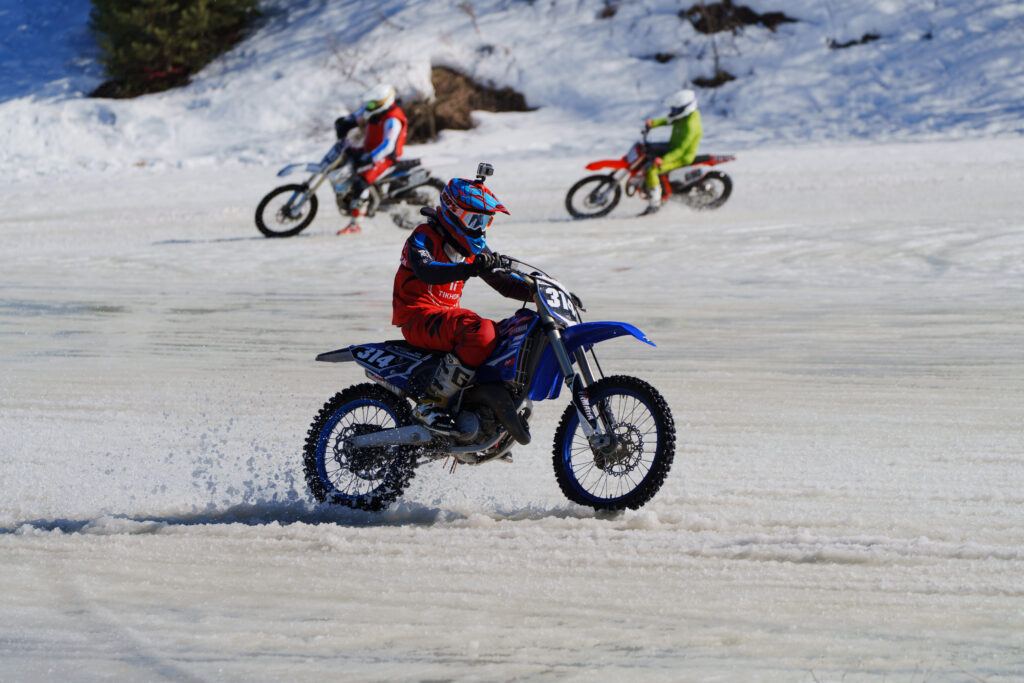
With proprietary CFexpress Type A, this does not happen even after several hundred shots: the camera continues to shoot at 10 frames per second. We were prevented from getting to the thousands of frames declared in the characteristics only by the space on the flash drive that ended earlier.
So the technical capabilities of the Sony A7 IV are enough even for very serious reportage shooting, you just need fast cards.
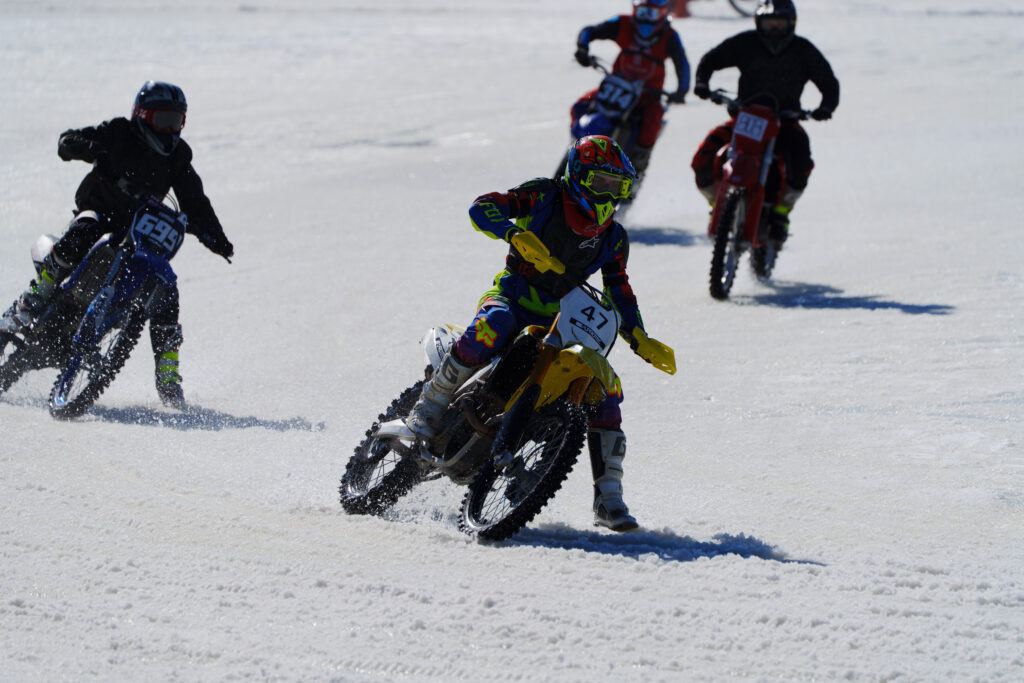
Autofocus
We can’t say that the autofocus of the Sony A7 IV has become faster: in a fraction of a second at the maximum available speed, the previous model could also move sharpness from one object to another. It would be more accurate to say that the autofocus of the novelty has become smarter.

Not once during the entire test did I use one area or AF point, such a need simply did not arise. When working with a wide area, automation in 90% of cases accurately finds the main object and “hooks” on it. You pick up the camera, press the shutter button and you just get sharp photos.
If for some reason this does not happen (the most common scenario is several equivalent objects), then just touch the desired object on the screen. Real-time tracking is enabled and the camera no longer loses focus on the selected subject. Simple, convenient and predictable.
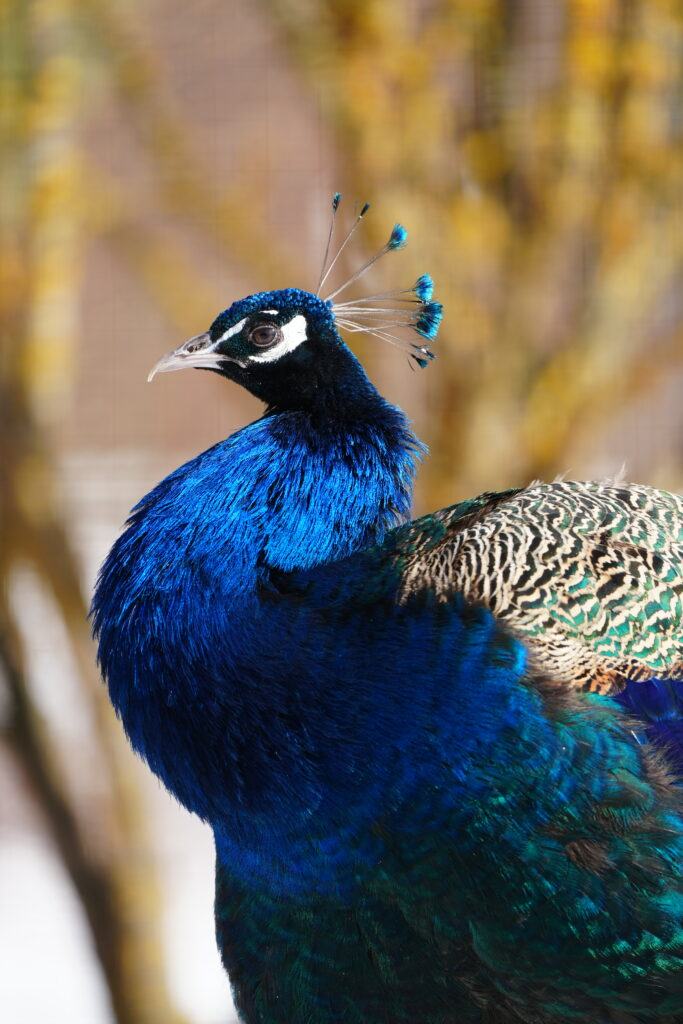
Face and eye recognition has become even more confident and accurate.
In the menu, you can now choose not only people and animals, but also birds. There are no problems with people at all: even if part of the face is closed, the camera will still recognize the eyes and aim at them with high accuracy.
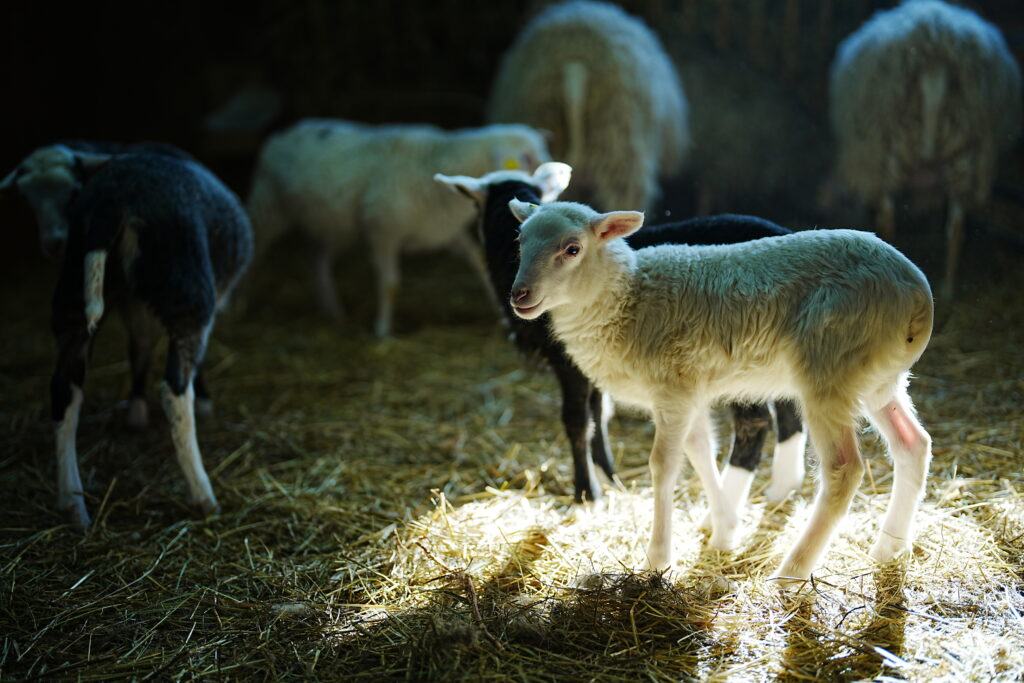
With birds and animals, the stability of recognition is slightly lower. But even if the automation did not circle the eye of the animal in the cherished frame on the screen, the focus is likely to be where it should be.
Stabilization
The stabilization system of the Sony A7 IV body has also been upgraded. Formally, we see its result in an increase in the declared efficiency from 5 to 5.5 exposure steps.
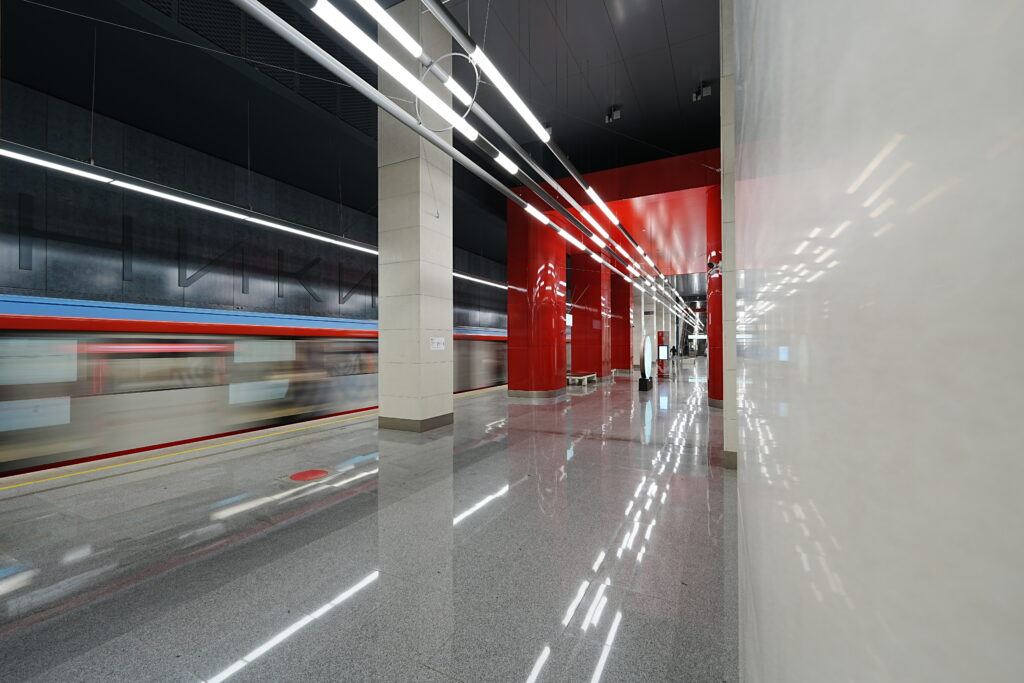
In practice, the stabilizer began to work more confidently at shutter speeds increased by 4–8 times. In order not to use high ISOs, I simply increased the shutter speed to ⅕-⅒ s and shot hand-held, not being afraid to get it blurry.

As for maximum efficiency, it was possible to get sharp handheld shots with a focal length of 70 mm up to a shutter speed of ⅓ s – this is 5 exposure steps. At a shutter speed of 1s or more, slight blurriness has appeared.
Electronic shutter
Unlike the Sony A9 II and Sony A1, the the Sony a7 IV uses a conventional sensor rather than a multilayer one. Therefore, it is impossible to call its electronic shutter distortion-free.
The effect of rolling shutter when using an electronic shutter can be caught, but it will be noticeable only in specific scenes. For example, for sports it is better to use a mechanical shutter.
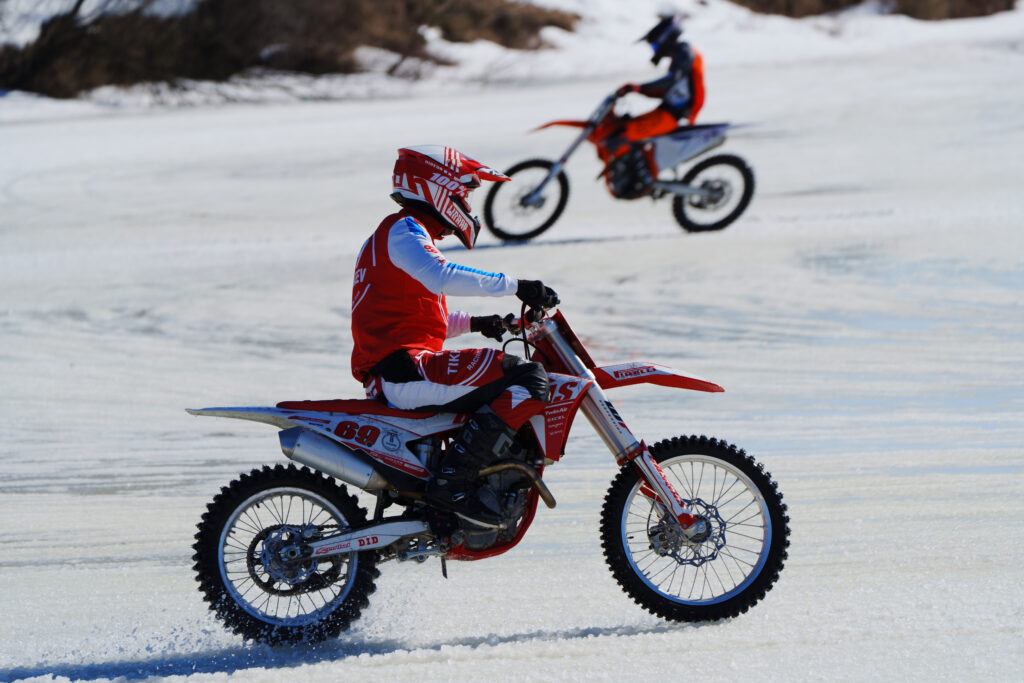
Sony a7 IV / FE 100-400mm F4.5-5.6 GM OSS Settings: ISO 320, F5.6, 1/4000s, 247.0mm equiv.
By the way, regarding the shutter speed, the electronic shutter does not provide any advantages. The minimum shutter speed is the same – 1/8000 s. But with it, the camera shoots silently.
Wi-Fi and Bluetooth
Not surprisingly, Sony A7 IV wireless interfaces are in line with the spirit of the times.
Wi-Fi operates at frequencies of 2.4 and 5 GHz. When connected to a smartphone, classic functionality is available: remote shutter release, control, image transfer. In this model, it became possible, along with JPEG, to transfer RAW to mobile devices.
The camera can be connected via Wi-Fi or USB to a computer for remote control using the Imaging Edge app.
From the top models of the Sony A7 IV brand, it inherited the functionality of working with FTP servers. You can use both Wi-Fi and wired Ethernet to connect to the network. In the second case, you will need to purchase a USB-LAN adapter. Even USB modems are supported!
Video-shooting
Video shooting is literally the second half of the capabilities of the Sony A7 IV.
The camera has received a number of significant improvements in terms of video and has become perhaps the most “hybrid” in the Sony lineup. It perfectly embodies the One Mount brand concept (single mount), which implies the unification of the brand’s photo and video devices with the E mount: from amateur crop models to professional products.
Video quality
The quality ceiling for the Sony A7 IV is 4K video recording at 50/60 fps with intra-frame compression, 10-bit color, 4:2:2 subsampling, and 500/600 Mbps bitrate respectively. Such shooting is possible only with crop up to Super35 (APS-C) format. You will need a CFexpress Type A or SD memory card with speed rating V90.
The transition to interframe compression allows you to significantly win in the volume of videos. Here, the maximum bitrate will be already 200 MB/s at the same 50/60 frames/s. But the limitation on the Super35 recording area remains.
Full-width 4K recording is available at 25/30 fps. In this case, 10-bit color and 4:2:2 subsampling are also supported.
In Full HD, you can shoot at up to 100/120 fps. The camera also has an S&Q mode that allows you to record fast or slow motion videos.
Color profiles
Like previous models, Sony A7 IV allows you to work with different gamma curve profiles.
There are proprietary profiles S-Log2 and S-Log-3. The minimum ISO for S-Log3 is 800 units. For convenience, you can turn on the display of a “colorized” picture on the screen in the usual Rec.709 color space, which greatly simplifies shooting.
Supports HDR video with HLG profile in BT.2020 color space.
An innovation was the S-Cinetone color profile.
Therefore, with the Sony A7 IV, editing unity is ensured when working with professional Sony video cameras. This is also a merit of the proprietary concept of a single mount (One Mount).
Focusing
Autofocus works in video shooting as stably and quickly as in photo mode.
However, the speed of focusing can be changed at the request of the operator. The default value is five out of seven, which is enough for dynamic scenes.
Autofocus on the eyes of people, animals and birds is also available. There is a priority for registered faces (for example, for the leader in the frame). You can choose the priority of the right or left eye.
In manual focus mode, both fragment magnification and finely tuned focus peaking are available. A new tool for manual focusing is the focus map. It can complement the usual focus-peaking.
Objects that are in focus are displayed without shading, the front and back zones of blur are highlighted with warm and cold colors. The more intense the color, the stronger the blur. Working with the focus map takes some getting used to, but can be quite handy when screen visibility is limited.

From the Cinema Line FX6, the camera borrowed another interesting feature – AF assist. During autofocus operation, you can manually adjust the focus using the lens focusing ring to a closer or farther subject.
After the ring stops, autofocus resumes, but from the selected location. This is a very handy tool for working with autofocus, which also allows you to make smooth transitions between plans.
Video functions and features
Breathing compensation
Breathing compensation is a new feature that first appeared in the Sony A7 IV.
With the help of dynamic crop, it allows you to completely correct the breathing effect of some lenses. We turn on the function in the menu, and when refocusing, the photo lens behaves like a real cine glass. The effect is noticeable immediately!
The feature currently works with the following lenses:
- SEL14F28GM
- SEL20F18G
- SEL24F14GM
- SEL35F14GM
- SEL50F12GM
- SEL85F14GM
- SEL100F28GM
- SEL135F18GM
- SEL1224GM
- SEL1224G
- SEL1635F28GM
- SEL24105G
- SELP28135G
- SEL70200F28GM
Stabilization
The built-in sensor-shift stabilizer works very confidently in video, allowing you to get smooth static plans without high-frequency vibrations. It is comfortable to work with it by hand, even with relatively long-focus lenses.
For more extreme cases, there is an active mode (digital stabilization). Shooting will take place with a crop, but the stabilization efficiency increases quite drastically. For example, I recorded a video in a moving subway car with an equivalent focal length of more than 100mm.
If this is not enough, you can additionally stabilize the video in the Catalyst Browse. The video metadata contains data from gyro sensors, which allow for additional stabilization on the computer.
Overheating
For most modern cameras, overheating issues are the very fly in the ointment in a barrel of high performance honey. We thoroughly tortured the camera to find out in what modes and how quickly it overheats.
With default settings and maximum video quality (4K@50p, 500 Mbps), the overheating icon will appear after 7 minutes! The camera body becomes warm, but not hot. It will turn off after 9-10 minutes. In this mode, you can shoot only a few short scenes.
And now we go into the menu and change the parameter MENU → (Setup) → [Auto Pwr OFF Temp.] to “High”. And one more trick: we open the articulated screen for better heat dissipation from the back wall.
Voila! During the test, the overheating icon appeared only at 31 minutes, at the 33rd minute the camera automatically turned off.
If you use interframe compression, then at the same 4K@50p, the camera will last for more than an hour of continuous recording (1 hour 5 minutes according to our test results).
When shooting 4K @ 25p, the Sony A7 IV did not overheat at all. After an hour and a half of continuous recording, the overheating icon did not appear, although the back wall of the case was noticeably hot.
Power consumption and charging
Power consumption in 4K video recording mode can be considered approximately equal to 1% per minute of recording (in 1 hour of 4K@50p recording, the camera used up 55% of the battery charge). These are already good numbers.
In addition, the Sony A7 IV can be powered via USB-C from a PowerDelivery-enabled source (AC adapter or power bank), which completely eliminates the issue of power consumption. You can connect external power even during recording, while recording does not stop.
Streaming
Another video talent of the Sony A7 IV was streaming in high quality via USB. No special software is required to connect to a computer. The camera is immediately recognized as an ILCE-7M4 webcam. Video parameters are set in the menu. Full HD video is available at up to 50/60 fps, which is a very high figure for streaming solutions. You can also stream in 4K, but only up to 12.5 frames/s, which is too low…
And now the most important and interesting thing: a sound signal is also transmitted from the camera. You can take it from the built-in, or you can use an external microphone (for example, from a four-channel XLR adapter). This is a complete solution for broadcasting in high quality.
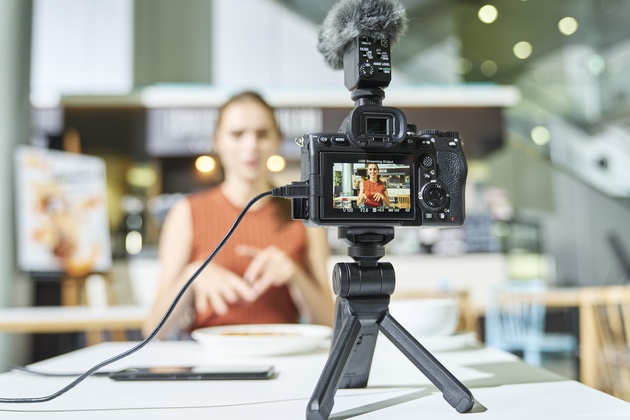
Conclusions
Sony A7 IV has definitely become more professional than its predecessor.
Its capabilities completely cover all conceivable and unimaginable requirements on the part of advanced amateurs and fully meet the needs of professional photographers and videographers, and equally. The Sony A7 IV is truly versatile.

For photographers, it is able to give very high detail images with a wide dynamic range and low noise at high ISOs. The speed of work does not raise questions, the “endless” buffer allows you to shoot complex reportage plots.

Autofocus with recognition of people’s faces and eyes, as well as animals and birds, is so good that you simply don’t remember about it. Only in the most difficult situations, sometimes you need to point on the main object by touching the screen, which the camera will no longer release its sharpness from.
The stabilizer helps out when shooting at slow shutter speeds. The new, fully articulated screen allows you to shoot from any vantage point.
The camera behaves just as predictably and accurately when shooting video. You can only find fault with the crop to the Super35 format when shooting 4K at 50/60 frames/s. But this is perhaps the only limitation. If you lower the frequency to 25/30 fps, then 4K will be recorded from the entire width of the sensor. Added support for 10-bit color and 4:2:2 subsampling.
The work of the optical stabilizer can be supplemented with a very effective digital one. And the function of automatic correction of the breathing effect literally makes you take a different look at the use of proprietary lenses when recording video: many modern photo lenses begin to work no worse than cine lenses.
The camera is good for both video recording and streaming: audio transmission is supported, up to 60 frames/s in Full HD and specialized software is not required.
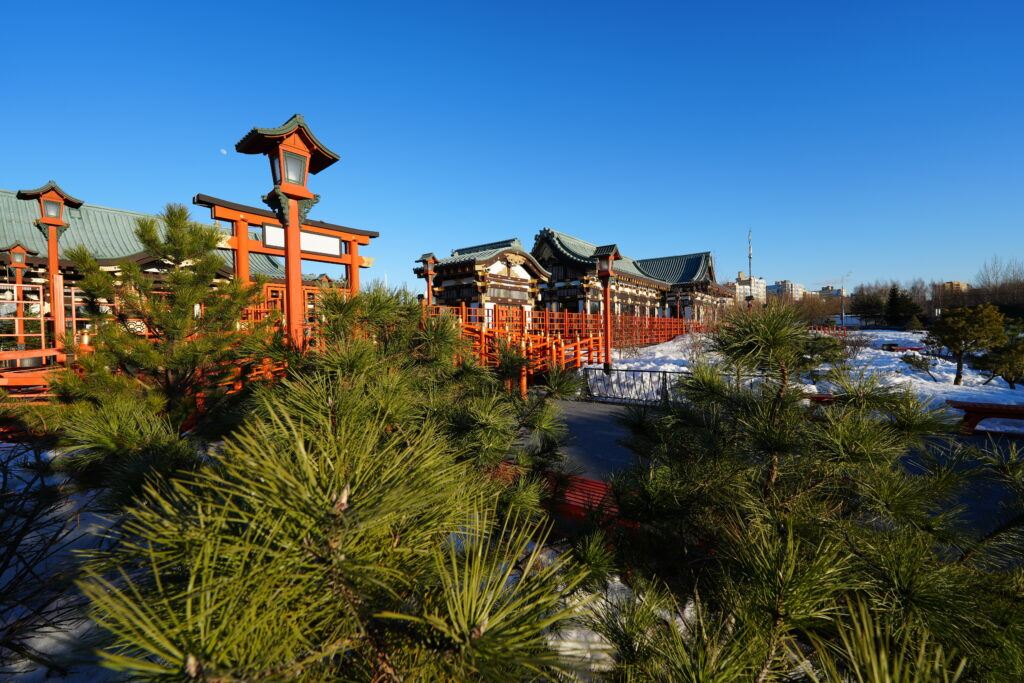
The Sony A7 IV has one drawback, and it is a direct consequence of the advantages of the camera. It’s about the complexity of the setup.
Even the new menu structure with a convenient touch interface did not become a lifesaver. A huge number of fine adjustments and new features will require you to carefully read the instructions and experiment with combinations of settings.
The only way to unleash the full potential of the novelty is to master its widest possibilities step by step.
Sony a7 IV Pros
- high resolution photos
- wide dynamic range
- confident work at high ISO
- burst rate of 10 fps with autofocus
- buffer over 1000 frames with CFexpress Type A cards
- fast and accurate autofocus with real-time tracking
- recognition of faces and eyes of people, animals, birds
- effective optical stabilizer
- 4K high bitrate, 10-bit color, 4:2:2
- support for S-Log, HLG, S-Cinetone
- support for digital microphones
- streaming Full HD 50/60 fps with sound
- long real time recording
- an abundance of auxiliary functions for focusing
- digital correction of lens breathing effect
- fully articulated touch screen
- the widest range of control settings
Sony a7 IV Cons
- menu not always clear to understand
- an abundance of subtle settings that require learning by trial and error
- 4K@50/60p is only recorded from the Super35 area
- significant buffer reduction when working with SD cards
